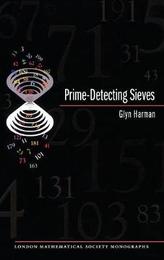
|
Prime-Detecting Sieves (LMS-33)
Hardback
Main Details
| Title |
Prime-Detecting Sieves (LMS-33)
|
| Authors and Contributors |
By (author) Glyn Harman
|
| Series | London Mathematical Society Monographs |
|---|
| Physical Properties |
| Format:Hardback | | Pages:384 | | Dimensions(mm): Height 235,Width 152 |
|
| ISBN/Barcode |
9780691124377
|
| Classifications | Dewey:512.7 |
|---|
| Audience | | Professional & Vocational | | Tertiary Education (US: College) | |
|---|
| Illustrations |
10 line illus. 9 tables.
|
|
Publishing Details |
| Publisher |
Princeton University Press
|
| Imprint |
Princeton University Press
|
| Publication Date |
5 August 2007 |
| Publication Country |
United States
|
Description
Seeks to describe the development in recent decades of sieve methods able to detect prime numbers. This work covers topics such as; primes in short intervals, the greatest prime factor of the sequence of shifted primes, Goldbach numbers in short intervals, the distribution of Gaussian primes, and the recent work of John Friedlander, and Iwaniec.
Author Biography
Glyn Harman is professor of pure mathematics at the University of London, Royal Holloway. He is the author of "Metric Number Theory", the coeditor of "Sieve Methods, Exponential Sums, and their Applications in Number Theory", and the corecipient of the Hardy-Ramanujan award for his work on primes in short intervals.
Reviews"This book provides a very nice introduction to a very active and important area of research. Several chapters include discussion of the limitations of the given methods; this is an unusual feature but a very useful one to readers. There is also helpful discussion of historical developments of the given methods. This a valuable book, both for researchers and for advanced graduate students in analytic number theory."--S. W Graham, Mathematical Reviews "[T]his book contains a valuable compendium of methods and results, and it will be of interest to aficionados of prime number theory."--Harold G. Diamond, SIAM Review "The book is written in a very accessible style for a wide spectrum of readers... Besides mathematical ideas, the presentation also contains many important historical comments, which make the book useful for a general mathematical audience trying to orient themselves in the evolution of the main techniques applied in sieve methods."--EMS Newsletter
|